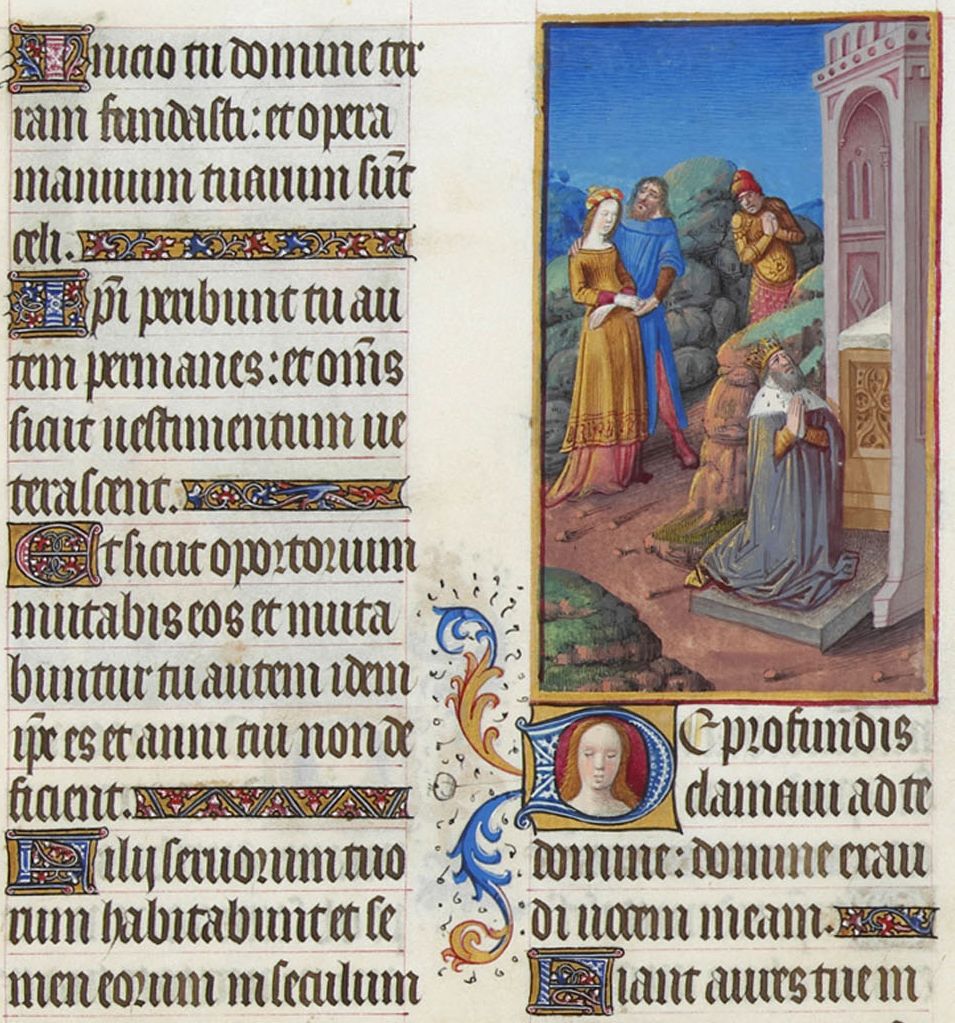 We have been looking at the history of Psalm 130 in music.
We have been looking at the history of Psalm 130 in music.
Last time, we looked at Bach’s treatment of the Psalm (Other installments: Part 1 | Part 2 | Part 3 | Part 4). This week, I want to highlight one other setting, suggest some conclusions, and provide several other settings without commentary. This Psalm has been approached by many composers and an exhaustive treatment of its history is outside the scope of this blog.
My last example is quite modern. Throughout this series, I have tried to highlight the continuity of musical expression within the diversity of composers and music traditions. I want to illustrate now that a fresh setting of the Psalm is still quite possible, with roots firmly buried in the larger tradition, but with a simultaneous creativity within that traditional framework. Again, this is what all the composers have shown. The sense of the Psalm is still “felt,” even amidst the widely different eras and musical languages.
So we fast forward from J. S. Bach and Lutheran Germany to Sir Walford Davies and 20th century Anglican Psalm Chant. Anglican Psalm chant was developed during the English Reformation, and flows out of the Latin plainchant tradition. Each verse or so are sung to a harmonized melody of either 7, 14, 21, or 28 bars. The choir loosely sings several words on the 1st, 4th, 8th, and 11th notes of each melody line. The other words are distributed on the remaining notes. This gives the church a way of singing the Psalm as written in any version of the English Bible (i.e., not in metered paraphrases, as it is other Reformation traditions). (You can purchase recordings of Psalm chant, and you won’t be disappointed if you do: Kings College | St. Paul’s | Hereford | Gloriae Dei Cantores.)
Again, I think it is important to note the kind of continuity a tradition can maintain. Sometimes important changes happen within the tradition, but, in the examples we have looked at throughout this series, the meaning of the Psalm influences and tempers the creative development. Moreover, there is a striking “relevance” of each of the settings we have seen. We see where the musical ideas are coming–from the deep meaning of the Psalm. This is the way cultural development should happen. And as we think of the different settings before us, representing 19 centuries of musical settings of this Psalm, we might look at a counter example that demonstrates well those not informed by the meaning of the Psalm or even the men and women who have sung it for millennia:
I do not mean to say, in all this, that all the examples are perfect or equally good. Some periods of music in Christian history have much to commend it. Others less so. But I do believe a case for continuity can be made. And I believe that this tradition ought to be perpetuated, not because of the tradition itself, but because of the kind of meaning the tradition is able to carry.
As I close this series out, for the sake of a kind of catalog of pieces not mentioned, here are some other examples of how the Psalm has been approached, especially since Bach (with the exception of du Prez):
Josquin du Prez‘s version, sung by the Hilliard Ensemble:
“Pseudo-Mozart“, sung by the UW Chamber Choir:
Felix Mendelssohn, Aus Tiefer Not, sung by Gloriæ Dei Cantores conducted by Gloria C. Patterson:
Franz Liszt composed a version for piano and orchestra. Here is the first movement:
American composer Virgil Thompson‘s version, performed again by Gloriae Dei Cantores:
John Rutter‘s well-known version, from his Requiem, performed by Monteverdi Choir Würzburg:
Arvo Part‘s De Profundis, here performed by Harry Christophers and the Sixteen:
About Ryan Martin
Ryan Martin is pastor of the First Baptist Church of Granite Falls, Minnesota. Prior to that, he served as the associate pastor of Bethany Bible Church in Hendersonville, North Carolina. He is on the board of directors of Religious Affections Ministries. Ryan received his undergraduate degree at Northland Baptist Bible College, and has received further training from Central Baptist Theological Seminary of Minneapolis, Minn. (M.Div., 2004; Ph.D., 2013). He was ordained in 2009 at Bible Baptist Church of Elk River, Minn. (now Otsego, Minn.). He has a wife and children too. Ryan is the associate editor of Hymns to the Living God (Religious Affections Ministries, 2017). He contributed to the Jonathan Edwards Encyclopedia (Eerdmans, 2017) and is the author of Understanding Affections in the Theology of Jonathan Edwards: "The High Exercises of Divine Love" (T&T Clark, 2018).
